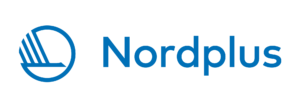Sustainability education promotions with outdoor education methods for better health of the Baltic Sea
Funding source: Nordplus Horizontal 2024

Project ID: NPHZ-2024/10120
Project period: May 2024 – Apr 2025
Total allocation: 70 584 EUR
Leading partner:
- Tartu Environmental Education Centre (EE, Foundation).
Project coordinator: Gedy Matisen (gedy.matisen@tartuloodusmaja.ee)
Co-operating partners:
- For a clean Lithuania, NGO (LT, NGO)
Project manager: Giedrius Bučas (info@savebaltic.eu) - Norrtälje Nature Conservation Foundation (SE, NGO)
Project manager: Lotta Andersson (lotta@norrtaljenaturcentrum.se)
Project summary:
This is a comprehensive project aimed at advancing environmental and outdoor education for all, fostering sustainability, and promoting cross-cultural collaboration. Through the organization of three educational events in Norrtälje (19.06.2024), Tallinn (16.10.2024), and Klaipeda (13.12.2024) to support the “Save the Baltic Sea” initiative, the project provides hands-on workshops, citizen science opportunities, coastal clean-ups, panel discussions, and lectures addressing the state of the Baltic Sea.

These events serve as platforms for cross-sectoral educators and learners, enhancing basic skills in science, social responsibility, and cultural insight. The emphasis on the Baltic Sea’s condition fosters awareness and deepens participants’ understanding of environmental issues which are needed for green growth and sustainable development.
Additionally, the development of new teaching/learning materials, including an educational program on Baltic regions’ erratic boulders and 6 outdoor ecology research “mobile classrooms”, contributes to skill enhancement and environmental awareness. These materials, intended for translation and online sharing, enable mutual learning and capacity building for organizations involved in outdoor education.
The project’s coordination, management, and networking, facilitated through 12 online and two physical meetings, further enhance professional development. The activities not only disseminate information but also promote cultural exchange and mutual learning among participants from diverse regions, professions and backgrounds to foster social sustainability.
Furthermore, a global online dissemination webinar widens the project’s impact. This initiative reaches a broad audience, fostering environmental awareness, sharing best practices, and showcasing successful initiatives. The integrated approach ensures that the project’s goals, including social sustainability and responsibility toward the Baltic Sea, resonate globally. By eliminating redundancy and maximizing engagement, the project emerges as a dynamic force in environmental education, leaving a lasting impact on participants, organizations, and the wider public.
Recorded webinars:
Webinar “Outdoor Education for sustainability” 18.03.25
Created materials:
- Rock trail animations in Estonian and with English subtitles
Two geology study programs and animations of glacial erratics:
- “In the Footsteps of Glacial Erratics and Fossils” (grades 4–6) combines fossil analysis, marine life videos, and global sand comparisons to deepen ecological understanding and observational skills. Printable worksheets: Sand, Fossil.
- “The Cryptographic Key to Glacial Erratics” (grades 7–9) blends outdoor exploration with indoor logic games, connecting geology with math, chemistry, and teamwork. Printable worksheets: construction geologists, drillers, glacial erratic, palaeontologists, treasure chest, workstation tags, Aseri geological survey, Kaarma geological survey, Jaani geological survey.
- Animated characters of glacial erratics.
Six Mobile Classroom boxes for ecology studies outdoors:
- One box named “Baltic Sea”: Focused on marine ecosystems, sustainability, and student-led inquiry. Box 1 content picture & the teachers’ manual for the Baltic Sea (“Östersjön” in Swedish)
- Two boxes named “Insects, Birds and Plants on Land”: Exploring meadow biodiversity and cultural heritage through art, biology, and games. Box 2 content picture & the teachers’ manual for the Insects, birds & plants (“Insekter, fåglar och växter” in Swedish)
- Two boxes named “Forest”: Encouraging sensory engagement and ecological literacy through games like “The Moose” and fungi-tree relationship studies. Box 3 content picture & the teachers’ manual for the Forest (“Skog” in Swedish)
- One box named “Lake & Stream”: Featuring aquatic biodiversity, water quality testing, and nature-inspired poetry and play. Box 4 content picture & the teachers’ manual for the Lake & Stream (“Sjö och å” in Swedish)